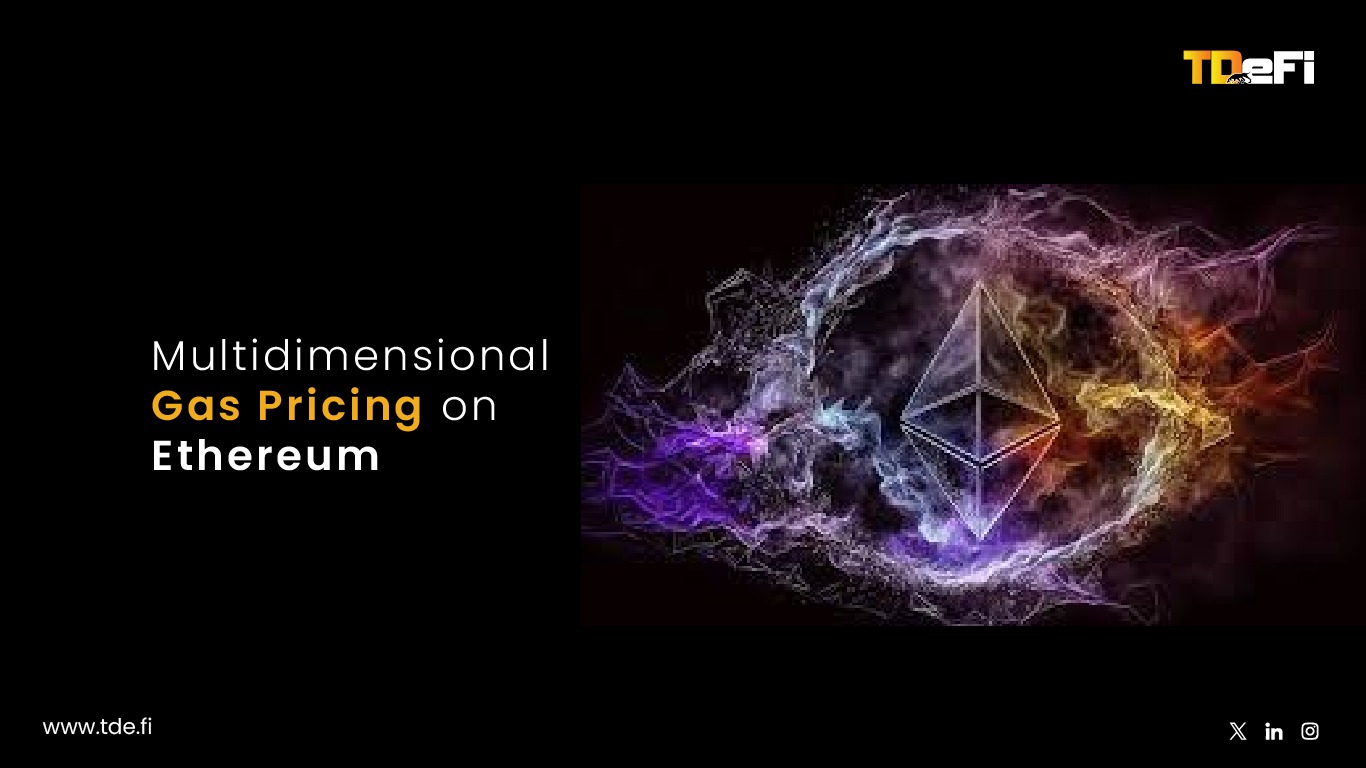The modern financial landscape has radically transformed with the emergence of cryptocurrencies. Central to this transformation is the revolutionary concept of tokenomics, a comprehensive framework that governs the economics of digital assets within blockchain ecosystems. This blog aims to thoroughly understand tokenomics, delving into its significance, underlying theories, constituent elements, and more.
What is Tokenomics?
Tokenomics serves as a blueprint guiding a cryptocurrency’s behaviour within its ecosystem. It orchestrates supply and demand dynamics, moulding how tokens are obtained, traded, and used. Unlike traditional economics, tokenomics interweaves technology and incentives into the fabric of digital currencies. Central to tokenomics is the token’s utility—its purpose within an ecosystem. This utility spans from unlocking services to engaging in governance. Thus, tokenomics fosters a symbiotic relationship between users and the blockchain.
Tokenomics is pivotal for investors since token supply and demand dynamics directly influence value and potential price appreciation. Limited supplies evoke rarity and value, while excess supply can erode it. Tokenomics also unveils how early contributors are rewarded and how the network sustains through fees and incentives. Developers leverage tokenomics to nurture projects. A well-structured model aligns incentives, driving user engagement and participation. Effective distribution mechanisms, like ICOs or airdrops, cultivate trust and community growth.
Tokenomics wields immense influence over a project’s fate. A thoughtfully crafted framework fosters growth, security, and innovation. Conversely, a poorly designed structure leads to volatility and project stagnation.
What is a Token?
A token is a digital unit of value or representation within a blockchain ecosystem. It can signify ownership, access rights, or other privileges in a decentralized network. Tokens are typically built on existing blockchain platforms, like Ethereum, and serve various functions, such as facilitating transactions, enabling access to services, participating in governance decisions, or representing assets like real estate or commodities. They play a pivotal role in the functioning of blockchain-based systems by incentivizing user engagement, providing utility, and contributing to the overall dynamics of the ecosystem.
Cryptocurrencies have several types of tokens, each serving specific functions within blockchain ecosystems. Here are some common types:
- Utility Tokens: These tokens are used to access specific services or features within a blockchain network. They enable users to pay for services, products, or interactions within the ecosystem.
- Security Tokens: These tokens are backed by real-world assets like stocks, bonds, or real estate. They are subject to regulations and represent ownership in traditional financial instruments.
- Governance Tokens: Governance tokens grant holders the right to participate in decision-making processes within a decentralized network. They allow token holders to propose and vote on changes, upgrades, or protocol amendments.
- Stablecoins: Stablecoins are designed to maintain a stable value, often pegged to a traditional currency like the US Dollar. They offer a less volatile option for transactions and are commonly used for trading and as a store of value.
- Non-Fungible Tokens (NFTs): NFTs represent unique digital or physical assets, such as art, collectibles, or even real estate. Unlike other tokens, each NFT has distinct properties and cannot be exchanged one-to-one.
- Wrapped Tokens: Wrapped tokens are tokens from one blockchain that are compatible with another. For example, Wrapped Bitcoin (WBTC) is a tokenized version of Bitcoin that can be used on the Ethereum blockchain.
Significance of Value in Token Economics
Tokenomics is all about creating value, and it is one of those things which makes it different from regular money which gets its value from a government or a central organization. But with cryptocurrencies, it’s a bit more interesting. Their value doesn’t come from any one place – it’s a mix of things like how useful the technology is, how much people use it, and what people feel about it in the market. To really understand tokenomics, it’s important to know how this value is made, how it spreads, and how it sticks around.
The significance of value in token economics extends across various dimensions, fundamentally shaping the dynamics of cryptocurrencies and their impact on the broader financial landscape:
- User Engagement and Adoption: A token’s perceived value directly influences user engagement. Users are more likely to participate in a blockchain ecosystem if they perceive the token as valuable and capable of fulfilling their needs. Its value is a powerful incentive for users to participate in the ecosystem actively.
- Attracting Investors: A token’s value appreciation potential is a significant motivator for investors. A token’s perceived utility and potential for growth drive investment decisions, affecting the project’s funding and development.
- Project Sustainability: The value of a token often correlates with the project’s long-term viability. A tokenomics model that maintains or increases token value can ensure project sustainability, funding ongoing development and innovation.
- Market Sentiment: The collective perception of a token’s value influences market sentiment. Positive sentiment can attract new users, while negative views can lead to decreased interest.
- Token Utility: The value of a token is closely tied to its utility and use cases within the ecosystem. Tokens that enable access to valuable services or resources tend to have higher perceived value.
Incentive Theory in Token Economics
The Incentive Theory is a foundational concept within token economics, shaping user behaviour and driving engagement in blockchain ecosystems. This theory centers on the premise that individuals are motivated to act in specific ways when provided with incentives that align with their interests. In tokenomics, the Incentive Theory leverages this human tendency to encourage desired actions within a cryptocurrency network. Here’s a deeper explanation of the Incentive Theory in token economics:
- Behavioural Motivation: The Incentive Theory acknowledges that people are likelier to take actions that lead to rewards or benefits. This can range from tangible gains like financial rewards to intangible ones like recognition within a community.
- Token Rewards: Tokens, as value units, serve as the primary incentives in this context. The theory aims to stimulate engagement and contribution to the network by rewarding users with tokens for their desired actions.
- Network Growth: The Incentive Theory contributes to the organic growth of blockchain projects. The network becomes more secure, efficient, and vibrant as more users are drawn to participate due to the rewards offered.
- Decentralized Governance: Many projects utilize governance tokens to empower holders with decision-making power. The Incentive Theory also applies here, as token holders are motivated to participate in governance processes to influence the project’s direction.
- Community Building: Incentive-driven engagement often leads to the creation of strong and active communities. Users with shared interests collaborate to achieve common goals, fostering a sense of belonging and shared success.
How Crypto Tokenomics Works
Crypto tokenomics refers to the complex interplay of supply, demand, distribution, and utilization of tokens within a blockchain ecosystem. It involves designing a self-sustaining economic model that incentivizes user engagement, fosters community growth, and supports the project’s overall development. Here’s an overview of how crypto tokenomics works:
- Token Creation and Supply: Tokens are created based on the project’s specifications. The total supply is often capped to introduce scarcity and potential value appreciation. Scarcity can stimulate demand and promote the perception of tokens as valuable assets. Tokenomics models constantly aim to balance supply and demand dynamics to create a stable and valuable ecosystem.
- Utility and Use Cases: Tokens are imbued with utility, enabling access to specific services, features, or resources within the ecosystem. A clear use case enhances token value by providing tangible benefits to users.
- Token Distribution: Tokens are distributed through various mechanisms, including Initial Coin Offerings (ICOs), token sales, airdrops, and mining rewards. Each distribution method has implications for the initial supply distribution and the project’s community dynamics.
Features of Tokenomics
The configuration of Tokenomics defines the motivating factors that prompt investors to acquire and retain a particular coin or token. Similar to the diversity of fiat currencies, each cryptocurrency possesses its distinct monetary strategy. Tokenomics encompasses a duo of vital aspects within a crypto economy: the motivating rewards that outline token distribution and the tokens’ utility, which shapes their desirability, and the interplay of supply and demand significantly shapes prices, and projects that effectively align incentives often experience substantial value surges.
Key features of Tokenomics are as follows:
- Token Allocations and Vesting: Token allocation ensures an even dispersion of cryptocurrency coins, considering the interplay between supply and demand. Vesting periods are incorporated to curb token sales’ impact on supply, focusing on mitigating potential price fluctuations. Token allocations and vesting strategies involve meticulous planning, often earmarking tokens for investors, teams, advisors, and the community. Thoughtfully crafted distributions strive to reduce supply-induced effects on token value.
- Staking and Yield Farming: Staking is integral to many token ecosystems, with users locking tokens for rewards and network involvement, bolstering security. Simultaneously, yield farming encourages liquidity by users depositing tokens into pools, leading to rewards. This dual strategy amplifies token utility and liquidity, promoting ecosystem efficiency and active participation.
- Token Burns: Token burning is a strategic practice that involves purposefully eliminating a predetermined quantity of coins regularly. The primary objective is to mitigate the surplus supply of tokens circulating within the ecosystem, thereby creating the possibility of augmenting the value of the remaining tokens. This technique is implemented to maintain a balanced supply-demand equilibrium and enhance token scarcity, influencing their perceived worth positively.
- Economic Models: Economic models within tokenomics involve strategies such as inflation, deflation, and adjusting token supply. These mechanisms are deployed to uphold equilibrium and stability within the ecosystem. Inflation introduces controlled increases in token supply to manage price stability. On the contrary, deflation diminishes supply to enhance scarcity and potential value. These dynamic adjustments ensure a balanced economic environment, influencing token value and network sustainability.
Why Is Tokenomics Important?
Tokenomics holds immense significance as a fundamental framework that dictates the dynamics of blockchain projects and cryptocurrencies. Its role is paramount in determining the success and sustainability of these digital ecosystems. By encompassing various factors such as token distribution, utility, incentives, and economic mechanisms, tokenomics directly influences user engagement, project viability, and overall ecosystem functionality.
A well-designed tokenomics model creates a compelling incentive structure that drives active user participation in key activities like transaction validation, governance, and network security, fueling the ecosystem’s growth. This, in turn, establishes a vibrant and committed community, which plays a pivotal role in development, promotion, and long-term success. Beyond community building, tokenomics also shapes market perception, enhancing the project’s credibility and attractiveness to investors, traders, and users. Moreover, tokenomics ensures sustainable funding for ongoing development and operational costs, reducing dependence on external sources and enabling self-sufficiency.
By implementing mechanisms to control inflation, deflation, and token supply adjustments, tokenomics contributes to economic stability, fostering user trust. Furthermore, decentralized governance, facilitated by tokenomics, empowers token holders to participate in decision-making and protocol upgrades, aligning with the core principles of blockchain technology. Incentives within tokenomics also ensure network security through rewards for miners, validators, and participants. Ultimately, tokenomics influence token value by managing supply, demand, and economic factors, directly impacting user perception, trading activity, and investment decisions.
Green and Red Flags in Tokenomics
Green Flags of Tokenomics
- Clear Utility: A strong tokenomics model includes well-defined use cases and utility for the token within the ecosystem, ensuring it provides tangible value to users.
- Fair Distribution: Fair and transparent token distribution mechanisms, such as a balanced ICO or airdrop strategy, demonstrate an equitable approach and community inclusivity.
- Incentive Alignment: Tokenomics that effectively incentivize desired behaviours, such as staking for network security or governance participation, signal a well-designed ecosystem.
- Economic Stability: Tokenomics with controlled inflation and supply adjustments help maintain price stability, reducing excessive volatility.
- Active Community: A vibrant and engaged user community actively participating in network activities reflects healthy tokenomics, fostering long-term sustainability.
Red Flags of Tokenomics
- Unrealistic Rewards: Promising overly high rewards without a clear mechanism to sustain them can signal a potentially unsustainable or fraudulent tokenomics model.
- Concentrated Ownership: Token distributions heavily skewed towards a few entities raise concerns about centralization and potential market manipulation.
- Lack of Transparency: Insufficient information about tokenomics, distribution, or governance can erode trust and indicate potential hidden agendas.
- Excessive Supply: An uncapped or poorly managed token supply can lead to devaluation, eroding investor confidence and negatively impacting the ecosystem.
- Misaligned Incentives: Tokenomics that fail to reward desired behaviours or disproportionately favour certain stakeholders can harm ecosystem growth and user participation.
Tokenomics: Case Study
To explain tokenomics, let us take the example of Cardano (ADA):
a) Token supply: The total supply of ADA is 45 billion tokens. This supply is fixed and will never increase.
b) Token distribution: The initial distribution of ADA was as follows:
- Public Sale: 25.9 billion ADA ~ 57.6%
- Reserve: 13.9 billion ADA ~ 30.9%
- IOHK: 2.46 billion ADA ~ 5.5%
- EMURGO: 2.07 billion ~ 4.6%
- Cardano Foundation: 640 million ADA ~ 1.4%
c) Token utility: ADA is the native token of the Cardano blockchain. It offers the following utility and incentives:
- Staking rewards: Users can stake their ADA to earn rewards
- Governance rewards: Users can vote on decisions made by the Cardano network and earn rewards for the same
- Project Catalyst: Project Catalyst is a community-led funding program that uses ADA to support projects that are building on the Cardano blockchain
- Gas Fees: dApps use ADA tokens to pay for transactions on Cardano’s network
d) Economics Model – Presently, the inflation rate of ADA stands at 4.72%, this rate follows an exponential decline trajectory and is projected to reach 0.9% by 2030. Assuming an annual loss of 1% of the supply due to human errors, Cardano’s trajectory is set to become deflationary from 2030 onwards.
The token economics of Cardano are designed to promote long-term value for holders. The fixed supply of ADA helps to create scarcity, while the staking rewards and governance incentives encourage users to hold their tokens.
Conclusion
Tokenomics, the intricate fusion of economics, technology, and incentive mechanisms, lies at the core of the cryptocurrency universe. By grasping its multifaceted dynamics, one can confidently navigate the complex landscape of blockchain ecosystems. Armed with this comprehensive understanding, individuals can make informed decisions, contribute meaningfully to burgeoning projects, and partake in the thrilling evolution of the digital frontier.





